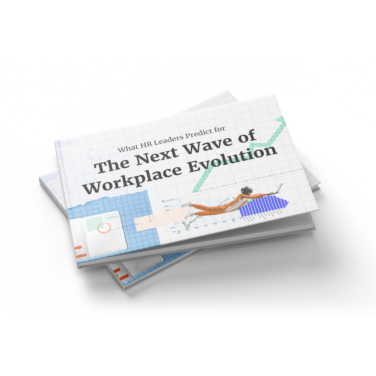If the words year-end payroll make you think of late nights, last-minute scrambles, and a frantic race to meet deadlines—you’re not alone.
For many HR and finance teams, the end of the payroll year can feel like organized chaos: juggling tax updates, final pay runs, benefit reporting, and government filings, all while employees are asking about their W-2s.
It’s a lot.
But here’s the good news: it doesn’t have to be that way. With the right prep, tools, and a clear checklist, year-end payroll can shift from a high-stress fire drill to a smooth, predictable process.
Here I’ll walk you through what needs to be done, when to do it, and how to stay ahead—so you can wrap the year with confidence (and maybe even a little breathing room).
What To Do For Processing The Last Payroll of the Calendar Year
Here’s what to do for processing the last payroll of the year and submitting your W-2s and 1099s.
1. Get clear on your process
As the Raoul P.E. Schweicher, Managing Partner at MS Advisory, highlights, the first step is to get clear on your process: “For year-end payroll, have everything documented—who does what, when deadlines hit, and backup plans when things go sideways. Write down the process from the previous year.”
2. Update employee information
- Check that all employee names, addresses, and Social Security Numbers (or National Insurance Numbers) are current and correct.
- Ensure you've processed any starters and leavers completely, with accurate tax codes or withholding information.
- For contractors who should be on payroll (US: 1099 vs W-2), re-evaluate their classification now—not in January.
3. Reconcile payroll records
This means:
- Reviewing gross wages, taxes withheld, benefits, and deductions.
- Look out for negative balances, duplicate entries, or misclassified earnings.
- Confirm bonuses or fringe benefits are scheduled properly—and taxed accurately.
3. Process final pay run carefully
- Run payroll as usual, but flag it as your final payroll of the year in your system.
- Account for special payments like:
- Year-end bonuses
- Commissions
- Outstanding vacation pay
- Fringe benefits or taxable reimbursements
4. Verify Benefit Contributions
- Confirm retirement (401(k)/pension), FSA, and HSA contributions are maxed out (or not overfunded).
- Catch any last-minute adjustments—for example, if someone wants to bump up their 401(k) deferrals before December 31.
5. Run Pre-Year-End Reports
Generate a few sanity-check reports:
- Employee Earnings Summary
- Tax Liability Report
- Deductions & Benefits Summary
- PTO accruals
These reports help confirm everything is tidy before submitting your final payroll.
6. Submit Final Payroll Filings
Mark final tax submissions accurately:
- Prepare Forms 941, 940, and finalize W-2s/W-3.
TL;DR Checklist
- Deadlines vary, but aim to finalize these on or before the last payday of the year.
- Review employee and payroll data
- Process bonuses and final payments
- Submit final payroll and tax filings
- Max out or adjust benefits
- Run verification reports
What To Do After the Last Payroll of the Calendar Year
Now you can breathe a little… but there’s more to do. Post-payroll tasks ensure your team gets the right tax forms and you start the new year clean.
1. Distribute Employee Year-End Forms
W-2s: Must go to employees by January 31. Most payroll systems generate these automatically—but double-check everything before hitting “send.”
2. Report Benefits and Expenses
- Include the value of benefits like personal use of a company car or relocation reimbursement in W-2 Box 12 or 14.
- Ensure taxable benefits are recorded and reported in line with local rules.
3. Update tax tables and codes
- Download and apply new IRS tax tables.
- Update employee tax codes for the new year if you’ve received notices.
4. Reset Annual Balances
- Reset PTO/vacation carryover (if applicable).
- Clear year-to-date balances in your payroll system for 401(k), health plans, and tax limits.
- Recalibrate benefits caps, accrual rates, or wage thresholds.
5. Schedule First Payroll of the New Year
Prep and preview your January payroll:
- Apply any new deductions or wage increases.
- Check if your payroll calendar aligns with public holidays.
- Ensure tax settings have been updated correctly before the first direct deposit.
6. Archive Year-End Reports
For audit and compliance:
- Store year-end tax filings securely.
- Keep final pay stubs, benefits reports, and liability summaries on file for the required retention period (typically 4–7 years, depending on jurisdiction).
TL;DR checklist
- Distribute W-2s / 1099s
- Update tax codes and software settings
- Reset YTD values and balances
- Archive reports and prep for January
What Is Year-End Payroll?
Year-end payroll is the process of finalizing your company’s payroll operations for the calendar year. It includes reviewing employee records, processing the final payroll run, reconciling wages and deductions, reporting benefits, and submitting necessary tax documents to the IRS.
It’s also when you generate and distribute year-end tax forms like W-2s or P60s to employees.
Think of it as the payroll version of tying up loose ends. Everything that happened—bonuses, tax withholdings, benefit deductions—needs to be checked, calculated, and reported accurately.
Year-end payroll is also your chance to reset for the next calendar year, applying new tax codes and wage thresholds.
Why Is Year-End Payroll Important?
Year-end payroll isn’t just about compliance; it’s about ensuring every number that goes to the government and your employees is accurate.
Mistakes here can lead to overpaid taxes, underpaid employees, or worse—penalties for missed filings or incorrect data.
It's a critical time to confirm that employee earnings, deductions, and taxes align with both federal and local laws.
Additionally, employees depend on you to get it right so they can file their taxes easily and without correction.
It’s also a key moment to reconcile benefit contributions like 401(k) or pension plans, flag any misclassified contractors or bonuses, and make sure nothing slipped through the cracks during a hectic year.
When Does The 2025 Payroll Year End?
In most cases, the payroll year aligns with the calendar year.
That means the 2025 payroll year ends on December 31, 2025 in the U.S.
The final payroll of the year needs to be processed and submitted in line with that respective year-end deadline.
If your regular payroll schedule (weekly, bi-weekly, monthly) overlaps with the year-end, you may encounter a special “Week 53” or similar extra pay period.
These situations can impact tax calculations and need to be handled properly to avoid incorrect withholdings or benefit reporting.
Tip: If your software flags week‑53 payrolls, trust it—it’s usually right!
What Happens if You Miss a Year-End Payroll Tax or Deadline?
Missing a payroll deadline can result in more than just a headache—it often comes with financial penalties and administrative hassle.
Late filing of W-2s or 941s can result in penalties ranging from $60 to $310 per form, depending on how late they are.
Beyond fines, the bigger issue is having to correct mistakes after the fact. Employees may receive inaccurate W-2s, potentially causing issues when they file their personal taxes. Amending those forms can take time and erode trust.
Staying ahead of deadlines not only avoids compliance issues but also builds reliability and goodwill among your team.
What Tax Forms Do You Need for End-of-Year Payroll?
The required tax forms depend on your country and employment type. In the U.S., employers must prepare:
- Form W-2: Sent to employees, reporting wages and taxes withheld.
- Form W-3: A summary sent to the Social Security Administration.
- Form 1099-NEC: For independent contractors paid $600 or more.
- Form 941/940: Quarterly and annual reports of federal payroll taxes.
Key Year-End Payroll Dates To Remember 2025
Here are the crucial deadlines to keep on your radar:
- December 31, 2025: Final payroll run of the year.
- January 31, 2026: Deadline to provide W-2s and 1099-NEC to employees/contractors.
- January 31, 2026: Deadline to file Forms W-2 and W-3 with the SSA.
- February 28, 2026 (paper) or March 31, 2026 (e-file): Deadline to file Form 1099-NEC with the IRS.
- April 15, 2026: Deadline for Form 940 (FUTA) and possibly some state unemployment filings.
Key Year-End Payroll Forms
Here’s a summary of all the most important payroll forms by region:
| Form | Purpose |
| W-2 | Reports employee wages and taxes withheld |
| W-3 | Summarizes W-2s sent to the SSA |
| 1099-NEC | Reports nonemployee compensation (contractors) |
| 941 | Quarterly payroll tax report |
| 940 | Annual FUTA tax report |
Payroll Year-End: 8 Best Practices
Building on the above, here are some best practices for ensuring the year-end payroll project runs smoothly.
1. Run regular audits and reconciliations throughout the year
Ashley Akin, CPA and tax consultant, Gold IRA Companies recommends “Cleaning up your payroll records throughout the year, not just during Q4. If you’ve been conducting payroll audits and reconciling your payroll data every quarter, the year-end process becomes a matter of confirming, not scrambling. It’s also smart to block time to review tax updates that take effect in January.
Even if those changes don’t impact this year’s filings, they affect planning for bonuses and retirement contributions.”
2. Start early and work backwards from deadlines
Avoid last-minute stress by initiating year-end payroll preparations as early as possible. Work backward from tax form distribution deadlines (e.g., January 31 for W-2s) to create a timeline. Share this with HR, finance, and employees so they can update their information on time.
3. Document your process and assign responsibilities
Create a clear, written workflow outlining what needs to be done, when, and by whom. Include contingency plans in case key staff are unavailable or systems fail.
A documented process reduces miscommunication, ensures accountability, and makes onboarding new team members easier for future cycles.
4. Audit employee and contractor information thoroughly
Ensure all names, addresses, Social Security Numbers, and employment classifications (e.g., W-2 vs. 1099) are current and correct. Process any new hires or terminations fully before year-end.
5. Reconcile payroll records with a fine-tooth comb
Check that wages, bonuses, deductions, and taxes are correct and there are no anomalies like negative balances or duplicate entries. Review fringe benefits and make sure they’re classified and taxed correctly.
6. Ensure communication across departments
Keep HR, finance, and payroll in sync—especially regarding bonuses, deferred compensation, benefits, and contributions. Share timelines, requirements, and status updates frequently.
Generate reports like employee earnings summaries, tax liability reports, PTO accruals, and deduction summaries before finalizing payroll. Use these for a final round of review and error-catching.
7. Have a backup plan
Don’t forget about backup plans. Tech can fail, files can get lost, and the holidays often mean key people are out of the office. It’s worth having extra hands trained and available, just in case someone can’t finish their part.
Year-end is stressful enough without scrambling because someone’s out sick or a system update went sideways.—Kevin Marshall, and I'm a CPA and personal finance professional at Amortization Calculator
8. Double check the logic behind your tools
Without clear processes, people burn out and planning fails. Automate where you can, but always double-check the logic behind your tools—especially after payroll software updates.
Year-End Payroll Checklist
Courtesy of Akin, use this year-end checklist to keep everyone aligned and ensure nothing gets missed:
“This doesn’t have to live in a spreadsheet. I’ve seen teams put it on a whiteboard, in Slack, or even on sticky notes... whatever works to keep the process visible and collaborative.”
Employee data and info
- Confirm all employee names match their Social Security or National Insurance records
- Verify current addresses for mailing W-2s/P60s
- Double-check bank account info for direct deposits
- Confirm benefit elections and deductions are accurate
Wages and compensation
- Review all final regular pay runs
- Process bonuses with correct tax withholding
- Handle unused vacation payouts and commissions
- Check fringe benefits and taxable perks (e.g., company car, relocation reimbursements)
Tax and compliance
- Reconcile year-to-date payroll against quarterly filings
- Apply any year-end tax adjustments
- Review and update state/local tax codes if needed
- Cross-check retirement contributions and benefit limits
Forms and filing
- Generate and review W-2s, 1099s, or P60s
- File forms with IRS/HMRC and other agencies by deadline
- Prepare ACA or pension reports if applicable
System and software
- Back up all payroll data
- Test any software updates or rule changes
- Lock the year after final run to prevent edits
Team and communication
- Notify employees when to expect tax forms
- Share instructions on how to access them
- Provide contact info in case of issues or corrections
Process evaluation and automation
- Track how long it takes to gather and verify data.
- Identify manual steps—consider automation to reduce errors and save time.
- Evaluate recurring processes for automation opportunities.
Year-End Payroll: Be Proactive, Not Reactive
Like with most projects involving multiple stakeholders and deadlines, successful year-end payroll is built on a foundation of pre-planning, communication and iteration.
As Teresa Smith, director, HCM Strategic Advisory Group at UKG, puts it so well, “Year-end payroll doesn’t have to be a scramble—it can be a strategic advantage.
By building a project plan, validating data early, and leveraging automation, payroll professionals can reduce errors, meet deadlines with confidence, and bring greater value to their organizations.
It’s about turning a traditionally reactive process into a proactive opportunity for accuracy, efficiency, and insight. Now is the time to assess your current workflows, identify gaps, and take action to streamline your year-end process for even greater success".
Subscribe To the People Managing People Newsletter
For further advice on year-end payroll and other pay and compensation tactics, subscribe to our weekly newsletter for HR and business leaders. You’ll receive all our latest content to help you grow in our career and make greater impact in your org.














